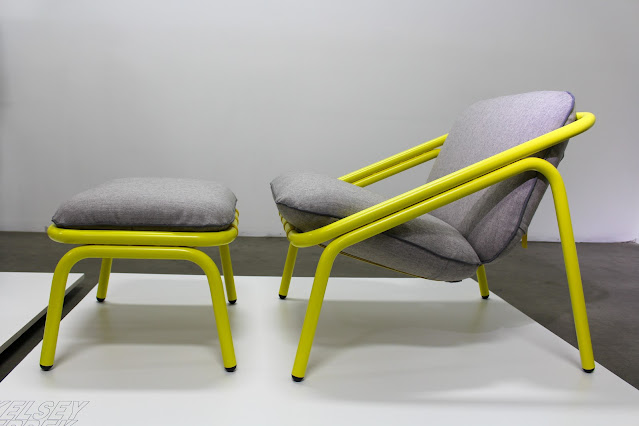Industrial Design for Pranav Mistry's SixthSense
I was excited to learn about Pranav Mistry's invention, SixthSense, which is a gestural computer interface that turns the relationship between the computer and the user inside out. Instead of people staring into a glowing screen, the computer is required to look outward at our physical world. By cleverly combining a digital camera , a mini-projector, and a smart phone, Pranav has introduced a new future of information accessibility and of human/computer relations. See his presentation on TED.com if you haven't already.
However, this is still a prototype, albeit a brilliantly engineered one, it is clunky, awkward and heavy. Seeing this opportunity, I challenged my Junior (3rd year) industrial design students at Western Washington University to design the SixthSense for ergonomics, ease of use, and aesthetics. They were to focus on a specific user scenario and they had to use currently available components, which were fixed in size. (No imaginary miniature electronic components were allowed) They then had to design the details of the housing and parts.
Here are some of the final results. There's much more behind these images and they have each been designed in detail inside and out. So if you'd like to see more, you can contact the individual students or see their portfolios on Coroflot.com.
SixthSense for Researchers by Paul Summerson. A shoulder mounted device on a sash that assists in library research.
SixthSense for Foreign Travel by Ben Peterson. A minimal device that could be hidden in a jacket with only the camera and projector lens visible.
SixthSense for the Active Mom by Ryan Maloney. An elegant sash form that has a tinted transparent cover over the projector and camera lenses.
SixthSense for Museum Visitors by Ian Mayhew. This device would be lent out by the museum to patrons and could be used to augment their experience and education.
SixthSense for Truck Drivers by Mike Oldani. This form is mounted into the headrest of the vehicles seat. It is removable and reversible to serve as a connection to family and friends, and driving assistant and for entertainment.
SixthSense for Construction Workers by Billy Losleben. This device is clipped onto a work belt, has a durable aluminum housing and could be used to display plans, systems, schedules, and measurements.
SixthSense for Outdoor Adventure Sports by Heather Harris. This is a helmet mounted device that is integrated, aerodynamic, and shock-proof.

SixthSense for the Classroom by Tom Kloucek. This is is desk mounted and is used as a learning device, teaching tool and can connect students to the teacher and each other.
SixthSense for Autism by Timothy Byrne. This device is designed to assist the austistic with social cues, memory aides, and social networking.
SixthSense for the Memory Impaired by Cecilia Forsgren. This is a minimal, sash mounted device designed especially for a young person who suffers from brain damage and needs assistance in various ways.
SixthSense for Gaming by James Lin. How could the SixthSense create a new category of gaming? This device is wall or table mounted and interacts with physical objects to enable new types of games.
SixthSense for Search and Rescue by Dieter Amick. The stress of search and rescue could be reduced with this technology by incorporating infrared sensors, sensitive directional audio microphones, communication, navigation and medical guidance.
SixthSense for Driving by Kyle Thomas. Designed to better connect the driver with the car and the road, through performance measures, navigation, communication, and visual cues.















Comments
Industrial Resume